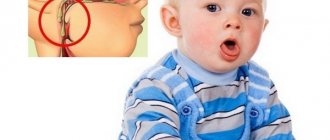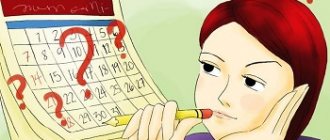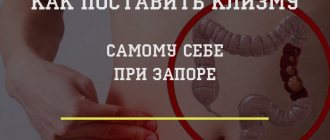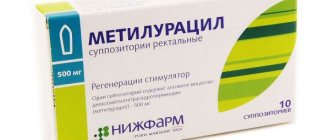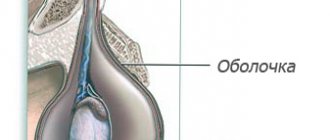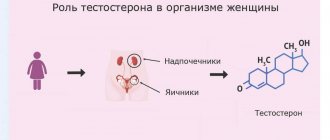Pain in the jaw when opening the mouth, localized anterior to the ear canal (anterior to the ear) is one of the main signs of problems with the temporomandibular joint (see “TMJ dysfunction”), which provides a mobile connection between the lower jaw and the skull.
Pain in the jaw joint can have varying degrees of severity, intensify when opening and closing the mouth, and be accompanied by difficulty and sometimes impossibility of opening the mouth. May be accompanied by various “noise effects” in the joint area: clicking (see “Clicks when opening the mouth”), grinding, creaking (see “Crunching when opening the mouth”). And also tinnitus. But all these signs, if left unattended, can soon have quite unpleasant consequences for the patient.
During a direct examination by a specialist, you will be able to find out your exact diagnosis, as well as receive a referral for diagnosis or a treatment plan.
about the problem
Pain in the maxillofacial area (myofascial pain syndrome) is a complex interdisciplinary problem in medicine.
Pain in the jaw can occur when teeth, bones, cartilage, muscles, blood vessels and nerves of the maxillofacial area are damaged. The causes of damage can be inflammation, dystrophy, trauma, tumors of the tissues of the maxillofacial area, anomalies in the structure of the skeletal system.
Usually the first specialist people turn to when they experience pain in the jaw area is a dentist. But the cause of pain is not always diseases of the oral cavity and teeth. For some patients, the dentist finds it difficult to diagnose.
Next, patients will undergo examination: by a neurologist to exclude inflammation of the trigeminal and laryngeal nerves, diseases of large vessels of the neck and head; an ophthalmologist to identify diseases of the eye and orbit; an otolaryngologist to examine the nasal passages, sinuses and exclude chronic inflammatory processes.
There is also a group of diseases that do not directly affect the jaw tissue, but the pain they cause can radiate into the jaw. Such pain can occur during myocardial infarction and angina attacks. In this case, pain is simultaneously felt in the left shoulder blade and left arm. Chronic pain in the jaw of an aching nature occurs due to inflammatory processes in the large vessels of the neck and head. To distinguish between these conditions, an in-depth study is required using functional diagnostic methods, MRI, and CT.
If all known diseases are excluded, the question arises, what then causes pain in the maxillofacial area?
The most common cause is a severe spasm of the masticatory muscles, which causes sudden and sharp pain in the jaw when chewing, yawning, opening the mouth wide, etc. Such pain is called myofascial, and the disease is myofascial pain syndrome.
The mechanism of development of myofascial pain and muscle spasm is associated with the formation of painful muscle compactions in the masticatory muscles, which are called “triggers”. The trigger may be located outside the area of pain, and when pressure is applied to it, a painful lumbago occurs in the maxillofacial area.
Pain in the jaw can be aching, intermittent or constant, more acute or dull, accompanied by tingling, numbness and goosebumps. Additional symptoms are possible: twitching of the facial muscles, noise, ringing in the ears, stuffy ears, clicking in the jaw joints, increased sensitivity to cold. In severe cases, the pain spreads to the other half of the face, and it is difficult to open the mouth and chew.
The causes of triggers are: increased excitability of the central nervous system, trauma to the skull and maxillofacial area, cervical osteochondrosis. Therefore, in addition to the jaw area, pain can be observed in the cervico-occipital, as well as in the temporal, frontal and parietal areas of the head.
Thus, pain in the jaw occurs for a wide variety of reasons, and establishing a diagnosis is often very difficult.
Myofascial pain is the most difficult type of facial pain for dentists and specialists to diagnose. Pain and spasms in the jaw muscles are recognized and treated only by a vertebroneurologist.
Diagnostics
Diagnostic measures are carried out by a dentist or maxillofacial surgeon. According to indications, a neurologist, cardiologist, and other specialists are involved in the examination. The doctor determines the nature of the symptom, its changes since its onset, and its dependence on external factors. Identifies other complaints, conducts a general and dental examination to detect objective changes (hyperemia, edema, decayed teeth, asymmetry). To make a final diagnosis, data from studies such as:
- Radiography
. Informative for injuries, purulent processes (except for the acute stage), tumors, and some dental pathologies. Helps confirm the presence of a fracture, identify other bone changes, differentiate osteomyelitis and periostitis from inflammation of the surrounding soft tissues, distinguish between benign and malignant neoplasms. - CT scan
. CT scanning of the jaw provides more accurate data on the condition of hard structures compared to radiography. It is carried out when the diagnostic value of x-rays is insufficient, there is a need to clarify the location of fistulas, the nature of injuries and neoplasia. A CT scan of the skull makes it possible to determine the narrowing of the foramina, which causes compression of the nerve with the development of neuralgia. - Magnetic resonance imaging.
Recommended to exclude tumor and vascular origin of compression of the nerve trunk. Detects cysts, neoplasia, aneurysms, and tortuosity of vessels passing next to the nerve. - Electrophysiological studies
. Electromyography allows you to confirm pathological muscle activity during myofascial pain, bruxism, and assess the quality of neuromuscular transmission during neuralgia. Electroneurography makes it possible to determine the extent and level of nerve damage. An ECG is indicated for patients with suspected ischemic heart disease. - Invasive techniques
. A lymph node biopsy is performed when the submandibular or cervical lymph nodes are enlarged in patients with tumors. For perimaxillary phlegmon with a deep location of the purulent focus, a diagnostic puncture may be required to verify the diagnosis. - Lab tests
. The causative agent of purulent processes is determined by inoculating the discharge on nutrient media. For neoplasms, a morphological study is performed to determine the type and degree of malignancy of neoplasia.
Consultation with an oral and maxillofacial surgeon
standard treatment
In case of acute pain, urgent medical care is required in specialized clinics.
For chronic pain, painkillers and anti-inflammatory drugs are usually prescribed. The pain can be relieved by cold or heat, massage, and physiotherapeutic procedures.
In severe cases of chronic pain, when the cause is not identified, doctors often associate them with mental disorders and therefore prescribe tranquilizers, antidepressants, and anticonvulsants.
Associated symptoms
Not only pain syndrome can indicate the development of diseases of teeth and gums. Warning signs are also:
- bad breath,
- bleeding gums,
- swelling of the cheek or lip,
- redness and swelling of the gums,
- mobility of teeth,
- local temperature increase.
Have you noticed several of the listed signs at once? Make an appointment with a dentist. An experienced doctor will help eliminate the problem and maintain dental health.
our treatment
Unlike standard algorithms for searching for the cause of jaw pain, our clinic uses a specialized vertebroneurological approach. This approach allows you to accurately determine whether jaw pain is due to muscle triggers or not.
We consider triggers as one of the main causes of jaw pain in cases where the cause is not determined by other specialists: dentist, ENT specialist, ophthalmologist, neurologist.
To treat painful muscle spasms and tightness (triggers), we use the method of muscle mesotherapy. After a series of microinjections with vitamin preparations, muscle spasms are relieved and areas of compaction are resolved, as a result of which pain in the jaw goes away.
Additionally, sessions of osteopathy, acupuncture, and physiotherapy are prescribed.
Diagnostics and x-ray of the temporomandibular joint
Diagnosis of TMJ when it is dysfunctional is difficult due to the variety of clinical complaints. This leads to the fact that the patient can undergo examination by different specialists for a long time, wasting time. A full examination is carried out by dentists
(primarily an orthopedist or orthodontist) and neurologists.
Diagnosis with the naked eye is difficult, and TMJ problems can only be directly noticed if the malocclusion is clearly visible. Most often, dysfunction of the temporomandibular joint is associated precisely with disorders of bite and jaw closure.
The most reliable and effective way is to conduct x-ray diagnostics and orthopantomogram
jaws. In some cases, an MRI may also be done.
cost of treatment
The cost of treatment in our center is calculated individually, depending on the severity of the disease, its duration and the presence of complications.
Each patient is prescribed comprehensive sequential treatment in the form of a course of individually selected procedures.
In addition to the procedures, the treatment course includes a free follow-up appointment.
Initial and repeat appointments, as well as medications prescribed by a doctor, are paid separately. The cost of the initial appointment is 3,000 rubles.
A 10% discount is provided for a one-time payment for a treatment course.
Treatment of the temporomandibular joint
Complex treatment of TMJ is possible only in dentistry, and is possible thanks to:
- surgery on the lower jaw;
- orthodontic treatment
(prescribing special trainers that will be worn at night and reduce pain by adjusting the load on the joint - the same trainers are recommended for bruxism) and bite correction with braces;
- orthopedic treatment
and
implantation
(insert a suitable prosthesis to restore the correct closure of the jaws).
Treatment is always prescribed individually, based on the results of an examination by an orthodontist, and is most often carried out comprehensively. It is dangerous to neglect TMJ diseases: this can lead to arthrosis, in which connective tissue grows in the joint cavity, which, in turn, threatens complete immobilization of the joint (ankylosis).
Severe pain and joint spasms can be relieved with compresses and painkillers; Stresses that provoke tension in the joint can be relieved with sedatives, but all these are half measures that do not treat the root cause of the pain.
start of treatment
Treatment of jaw pain in our center begins with an appointment with a vertebroneurologist. The initial appointment is conducted by the candidate of medical sciences, chief medical doctor Lyudmila Ivanovna Mazheiko.
A vertebroneurologist will examine the nerves of the maxillofacial area; will identify painful compactions in the chewing, facial and cervical muscles, which are the causes of pain in the jaw; will establish the reason for the formation of triggers; If necessary, he will prescribe additional examination (MRI, CT).
Based on the data received, the doctor will develop an individual treatment plan.
Appointments with a vertebroneurologist are carried out by appointment. To begin treatment, make an appointment.
Prevention
The main preventive measure to prevent the manifestation of severe pain in the jaw is a timely visit to the doctor. If any minor deviations occur, you should immediately consult a specialist. Early identification of the cause of a pathology that begins to develop is the first step towards solving the problem.
The patient should already be alerted by the appearance of unpleasant sensations and discomfort in the form of:
- deterioration of jaw mobility;
- crunching while yawning or chewing food;
- pain when opening the mouth;
- noise or pain in the ears;
- frequent headaches;
- grinding or creaking of the jaw;
- painful sensations in the neck and back.
Such symptoms are a reason to undergo diagnostic measures and, after diagnosis, receive the necessary treatment.
How to prevent trismus
There are 4 main ways to prevent trismus:
- massage your jaw muscles;
- train your jaw muscles;
- maintain good posture;
- Maintain proper oral hygiene.
This should be done even if there are no symptoms of trismus to prevent it. Follow the directions in the section below. If you have had surgery, ask your healthcare provider if it is safe before you have surgery.
You may need a timer or watch to help you hold the stretching position for the required amount of time. Breathe normally and do not hold your breath. If you feel pain, numbness, or tingling, stop immediately and call your healthcare provider.
Massage your jaw muscles
Press your index and middle fingers against your cheekbone. Use your fingers to massage the masseter muscle, which is attached to the lower jaw (see Figure 3). As you move your fingers, look for areas that are tender or tight. Massage these areas with circular movements of your fingers for 30 seconds. Do this 2-3 times a day.
Try not to clench your jaw when you are stressed or out of habit. This will help relax your jaw muscles.
Figure 3. Massage the jaw muscles
Train your jaw muscles
Perform these exercises 3 times every day. You can do them standing or sitting. Use a mirror to help you do the exercises correctly.
These exercises will help stretch the muscles well, but should not cause pain. If an exercise causes pain or discomfort, try doing it with less effort. If pain or discomfort persists, contact your healthcare provider.
Range of motion and stretching exercises
Your head should remain in one position while performing these exercises. Repeat these steps 5 times.
- Open your mouth as wide as possible until you feel a good stretch but no pain (see Figure 4).
Hold this position for 10 seconds. Figure 4. Opening your mouth as wide as possible - Move your lower jaw to the left (see Figure 5). Hold this position for 3 seconds.
- Move your lower jaw to the right (see Figure 6). Hold this position for 3 seconds.
Figure 5. Jaw shift to the leftFigure 6. Jaw shift to the right
- Make circular movements with your lower jaw to the left.
- Make circular movements with your lower jaw to the right.
Passive stretching exercise
Figure 7. Press your thumb and index finger against your teeth.
Repeat these steps 5 times.
- Press your thumb against your upper teeth in the middle of your jaw.
- Press the index finger of your other hand against your lower teeth in the middle of your jaw (see Figure 7).
- Open your mouth as wide as possible. Place additional emphasis with your fingers so that your mouth does not close. You should feel a slight stretch, but not pain. Hold this position for ______ seconds.
Maintain proper posture
Correct posture means sitting and standing with your ears, shoulders, hips, knees and ankles aligned horizontally (see Figure 8). To have correct posture, it is necessary to maintain good tone and stretch in the muscles of the neck and shoulders. The following exercises will help you with this.
Figure 8. Correct posture
Do them 2 times every day. You can do them standing or sitting with your arms at your side.
Neck stretch
Repeat these steps 5 times. Hold each stretch for 30 seconds.
- Tilt your head forward (see Figure 9).
- Tilt your head back (see Figure 10).
Figure 9. Head tilt forwardFigure 10. Head tilt back
- Turn your head to the right (see Figure 11).
- Turn your head to the left (see Figure 12).
Figure 11. Turning the head to the rightFigure 12. Turning the head to the left
- Tilt your head, trying to bring your left ear closer to your left shoulder (see Figure 13).
- Tilt your head, trying to bring your right ear closer to your right shoulder (see Figure 14).
Figure 13. Head tilt to the leftFigure 14. Head tilt to the right
Chin retraction
Figure 15. Retraction of the chin when pulling the head back.
Repeat these steps 5 times.
- Looking forward, tuck your chin.
- Pull your head back so that your ears are level with your shoulders (see Figure 15). Stay in this position for 3 seconds.
Scapula compression
Repeat these steps 5 times.
- Tuck your chin in as described in the exercise above.
- Squeeze and squeeze your shoulder blades together as hard as possible (see Figure 16).
- Stay in this position for 3 seconds.
Figure 16. Squeezing the shoulder blades together
Maintain proper oral hygiene
- Brush your teeth and tongue in the morning after sleep, after every meal and before bed.
- If you have removable dentures, remove and clean them every time you brush your teeth. Don't go to bed with dentures in your mouth.
- Floss your teeth once a day before bed.
to come back to the beginning
Symptoms of TMJ problems
The disease manifests itself with the following symptoms:
- Painful sensations occur on palpation.
- When opening the mouth, the patient feels a sharp pain.
- Due to pain, a person experiences difficulty eating and communicating.
- Breathing through the mouth is difficult.
- To the touch, the chewing muscles are compacted and slightly increased in volume.
- Facial asymmetry with unilateral spasm.
- Low-grade fever.
- Headache.
The gnathologist
carries out differential diagnosis with a fracture or dislocation of the jaw, as well as with an infectious lesion.
There are three degrees of disease progression: mild (the patient is able to open his mouth four centimeters), moderate (the mouth opens two centimeters), severe (the patient cannot open his mouth more than one centimeter).
Consequences of jaw spasm
Trismus is unpleasant for a person not only due to pain. When opening and closing the mouth is painful, the normal process of eating is disrupted and the gastrointestinal tract suffers. When the jaw spasms, breathing is impaired, which leads to constant oxygen starvation of the brain and headaches. This affects the composition of the blood and the functioning of the cardiovascular system.
Trismus caused by infections or tumors causes serious health problems. In this case, long-term serious treatment is required. In the initial stages, pain is completely relieved. For systemic diseases, when trismus is a secondary symptom, complex therapy is necessary.
